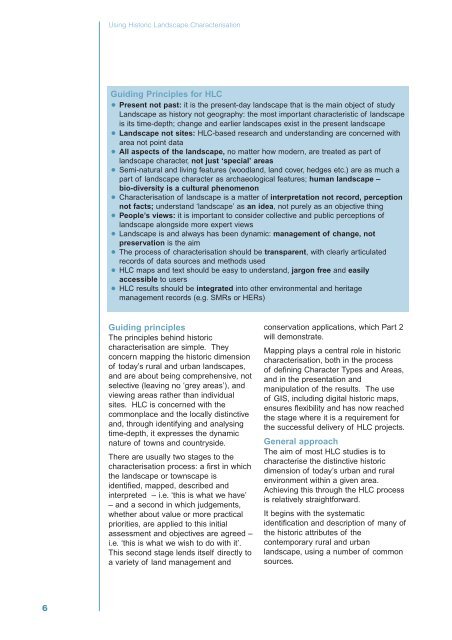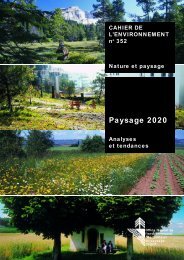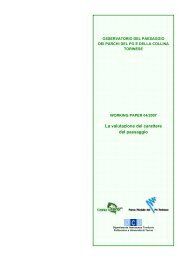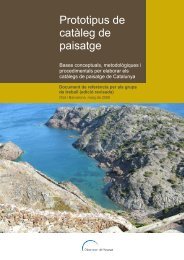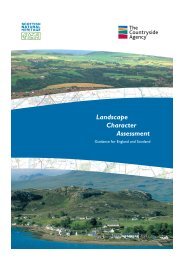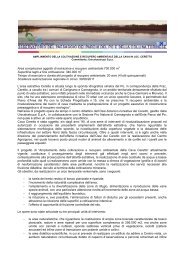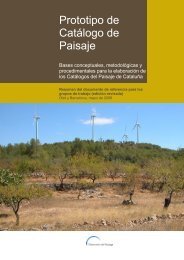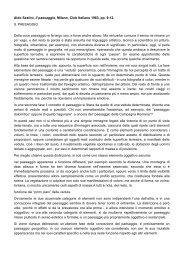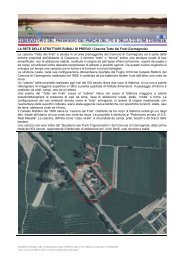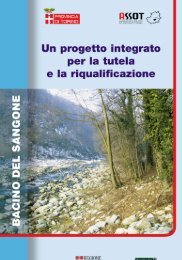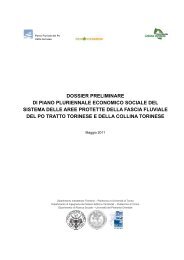Using Historic Landscape Characterisation
Using Historic Landscape Characterisation
Using Historic Landscape Characterisation
You also want an ePaper? Increase the reach of your titles
YUMPU automatically turns print PDFs into web optimized ePapers that Google loves.
<strong>Using</strong> <strong>Historic</strong> <strong>Landscape</strong> <strong>Characterisation</strong><br />
Guiding Principles for HLC<br />
Present not past: it is the present-day landscape that is the main object of study<br />
<strong>Landscape</strong> as history not geography: the most important characteristic of landscape<br />
is its time-depth; change and earlier landscapes exist in the present landscape<br />
<strong>Landscape</strong> not sites: HLC-based research and understanding are concerned with<br />
area not point data<br />
All aspects of the landscape, no matter how modern, are treated as part of<br />
landscape character, not just ‘special’ areas<br />
Semi-natural and living features (woodland, land cover, hedges etc.) are as much a<br />
part of landscape character as archaeological features; human landscape –<br />
bio-diversity is a cultural phenomenon<br />
<strong>Characterisation</strong> of landscape is a matter of interpretation not record, perception<br />
not facts; understand ‘landscape’ as an idea, not purely as an objective thing<br />
People’s views: it is important to consider collective and public perceptions of<br />
landscape alongside more expert views<br />
<strong>Landscape</strong> is and always has been dynamic: management of change, not<br />
preservation is the aim<br />
The process of characterisation should be transparent, with clearly articulated<br />
records of data sources and methods used<br />
HLC maps and text should be easy to understand, jargon free and easily<br />
accessible to users<br />
HLC results should be integrated into other environmental and heritage<br />
management records (e.g. SMRs or HERs)<br />
Guiding principles<br />
The principles behind historic<br />
characterisation are simple. They<br />
concern mapping the historic dimension<br />
of today’s rural and urban landscapes,<br />
and are about being comprehensive, not<br />
selective (leaving no ‘grey areas’), and<br />
viewing areas rather than individual<br />
sites. HLC is concerned with the<br />
commonplace and the locally distinctive<br />
and, through identifying and analysing<br />
time-depth, it expresses the dynamic<br />
nature of towns and countryside.<br />
There are usually two stages to the<br />
characterisation process: a first in which<br />
the landscape or townscape is<br />
identified, mapped, described and<br />
interpreted – i.e. ‘this is what we have’<br />
– and a second in which judgements,<br />
whether about value or more practical<br />
priorities, are applied to this initial<br />
assessment and objectives are agreed –<br />
i.e. ‘this is what we wish to do with it’.<br />
This second stage lends itself directly to<br />
a variety of land management and<br />
conservation applications, which Part 2<br />
will demonstrate.<br />
Mapping plays a central role in historic<br />
characterisation, both in the process<br />
of defining Character Types and Areas,<br />
and in the presentation and<br />
manipulation of the results. The use<br />
of GIS, including digital historic maps,<br />
ensures flexibility and has now reached<br />
the stage where it is a requirement for<br />
the successful delivery of HLC projects.<br />
General approach<br />
The aim of most HLC studies is to<br />
characterise the distinctive historic<br />
dimension of today’s urban and rural<br />
environment within a given area.<br />
Achieving this through the HLC process<br />
is relatively straightforward.<br />
It begins with the systematic<br />
identification and description of many of<br />
the historic attributes of the<br />
contemporary rural and urban<br />
landscape, using a number of common<br />
sources.<br />
6


